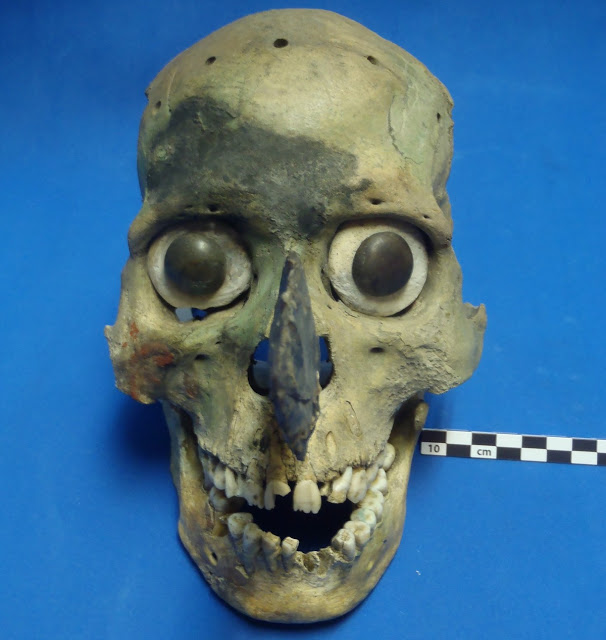It is widely known that the Ancient Aztecs had rather interesting rituals and customs. They are perhaps most famous for their huge stone temples and the practice of offering gruesome human sacrifices for their gods.
In the Templo Mayor in Mexico, 30 decapitated skulls were found along with eight masks fashioned from real human skulls. Experts are unsure as to why these masks were left behind and why they were made in the first place. It is believed the masks were left behind as offerings in the temple. Experts now believe that the masks were made from the bones of the defeated warriors.
Thanks to new archaeological studies, the researchers on the case have been able to tell that the skulls came from two different groups of people. In fact, the analysis had shown that the people were from two different geographical origins and social statuses. These skulls were found almost three decades ago, but experts have only now been able to get some answers thanks to new DNA analysis technology.
The experts believe that the artifacts were found buried with individuals who held a high social status. The masks and skulls date roughly to the reign of Emperor Axayactl, who ruled through the years of 1468 to 1481 AD.
The decorative human skulls were believed to have been made to wear over the face or attached as part of a headdress. They were then left as offerings to the dead.
Different parts of the bones were removed, the skulls were then dyed and then modified. Some of them had blades coming out of the nose cavities, and some had shells or pyrite in the eye sockets.
The offerings were found near the temple of Huitzilopochtli. Researchers believe the bones came from warriors who had been captured and eventually sacrificed.
The lead researcher, Corey Ragsdale of the University of Montana, had tested different techniques to see if he could discover the tools that were used in making the masks. He and his team had compared the cut marks and drill holes in the masks and experimented with replicas made from the actual masks. They had made these replicas in the Experimental Archaeology Workshop at the Museo del Templo Mayor in Mexico City. Lead image: Corey Ragsdale
By testing out the different techniques, they believed that the masks had been made locally right in the Templo Mayor. The researchers had also looked at the age, sex, and conditions of the remains in order to understand the difference between the people who had been used in creating the masks. They then looked the dental traits in order to find the geographic origin and population of the victims. They did this by comparing the patterns found in surrounding areas.
After the analysis, researchers found that there were major differences between the two offerings. The skull masks were made from adult males between the ages of 30 to 45 years old.
The analysis didn’t show there was any dental disease or nutritional imbalances. Researchers had said they had aligned patterns that were seen among the individuals of high status versus those associated with war.
The team explained that the victims could have been warriors that were captured or defeated during the war. They may have even been members of the nobility which were then executed in the towns that had sided against the emperor. The team said one of those skulls might have even belonged to the defeated king of Tollocan. Those victims may have originated from different locations like Toluca Valley, West Mexico, the Gulf Coast, and the Valley of Mexico.
The unmodified skulls came from both males and females who ranged in all different stages of adulthood. These people had more dental wear and disease as well as nutritional stress. They were most likely of low social status. Researchers go as far as believing that they could have been slaves or lower level fighters who had participated in the flower wars.
The researchers had written that although the offerings were associated with the temple of Huitzilopochtli, they had been carried out in an elaborate cultural treatment and a display that was reserved more for the elite warriors who were defeated by the Aztecs in battle.
There were masks made of precious stones, alligator skulls, sawfish, ceramics, and stone blades, as well as statues that were found in the temple throughout the years. The temple had actually been a major political and religious center at one point in time.
